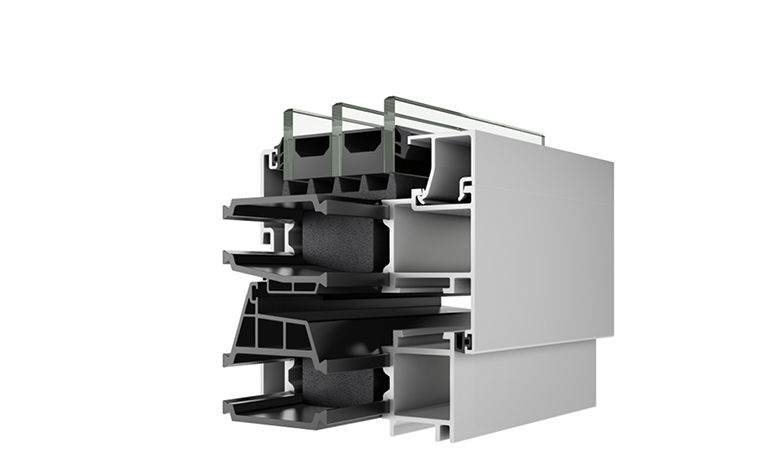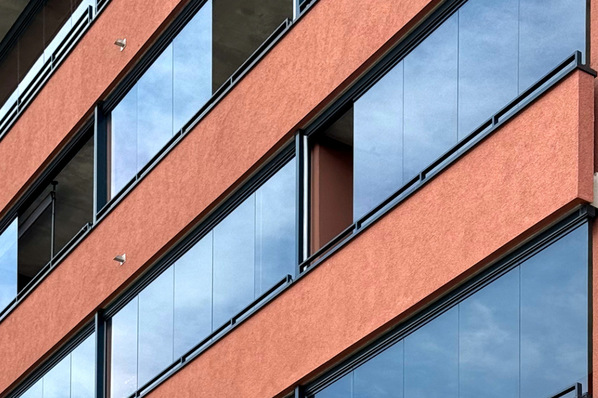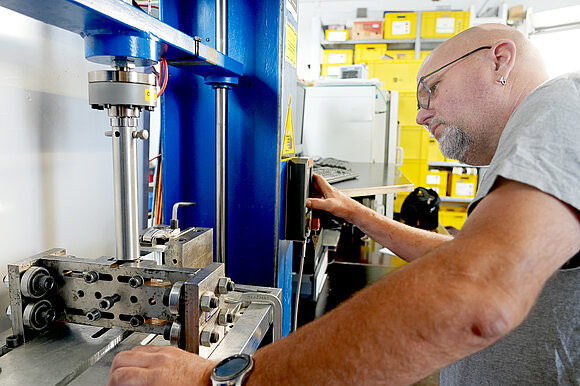If aluminium windows are powder-coated, it gets really hot. But normal insulation foams cannot withstand high temperatures of 200 °C and higher. The PE materials literally implode – the cells burst and melt, losing the insulation effect. For that reason the foams have to be injected, affixed or inserted afterwards; however this process is complicated and laborious. But now, creative plastics experts from Gargiulo have found an alternative in the form of a long-awaited, high temperature-resistant insulation foam …
“We were continually receiving requests asking whether we could develop a temperature-stable foam,” recalls Fabio Gargiulo. And we took on the challenge. He conducted intensive research before starting to develop the material. “Every now and then we manufacture polyamide insulating bars and therefore understand the coating processes. Our objective was to be able to deliver a foam as a solution at the same time.” The question of which plastic might be suitable for this plagued him for months. The material had to be resistant to high temperatures on the one hand and it had to foam in line with the requirements of the application in question on the other.
The right formula
A comprehensive series of experiments were performed on a slightly smaller scale on the extruder in the laboratory. Components were merged, and soon it was time to consider doing this on a greater scale. Now Gargiulo is working on the production phase. For this the company has built its own series machine, enabling supply on a large scale.
“Foaming this plastic isn’t that easy and it took a while for us to find the right formula,” explains Gargiulo. Achieving a successful result is dependent on optimally combining the additives and matching the gas quantity with the temperature. Our aim was to achieve a low lambda value and excellent compressive strength with a low density. The overriding objective was to provide a foam which, thanks to its high rigidity, could be inserted into pre-rolled aluminium laminates.
Not just for use in window frames
But the window and façade technology specialist has created so much more than “just” a high-temperature foam. The material isn’t porous or brittle, this means you can saw it, drill it, clip it and clamp it. The HT foam is also so pressure-resistant that even forces can be transferred. What is interesting is that the material can now be used for more than just window frames – i.e. in windowsill connections or support profiles, so an entire window can be fitted on the new material. “The product can even be used in completely different sectors like the wind power industry or shipbuilding.”
As yet unexplored combinations with flexible foams or rigid components will enable it to be used in countless new configurations. Gargiulo: “The original idea was to design a new insulation foam. But here we’ve created a completely new structural material, enabling completely novel uses. Milling complex geometries and direct extrusion are just as doable as special designs with partitions, noses or air chambers. The only limits here are the imaginations of the technicians and designers.”
The HT foam can even be used in glazing rebate. The company certified this by submitting the material to various different institutes. It underwent special testing for edge seal resistance.
At the Surface Engineering Institute resistance tests were also carried out in eloxal and degreasing baths. This is because foam must undergo chemical baths during a coating process. The high quality was evident here too; the plastic did not dissolve in the bath, did not react and retained its shape. Gargiulo: “Never before have we subjected a product to so many testing procedures. Our customers now have access to all of our certificates.”
Gargiulo’s conclusion: “We’ve reached a major milestone. We’ve shown that Gargiulo is a pioneer with a keen perception of where the real need is. Rather than launch similar products on the market, we want to offer wholly innovative solutions. Our thoughts are geared towards innovation and our approach is 100% targeted.”















